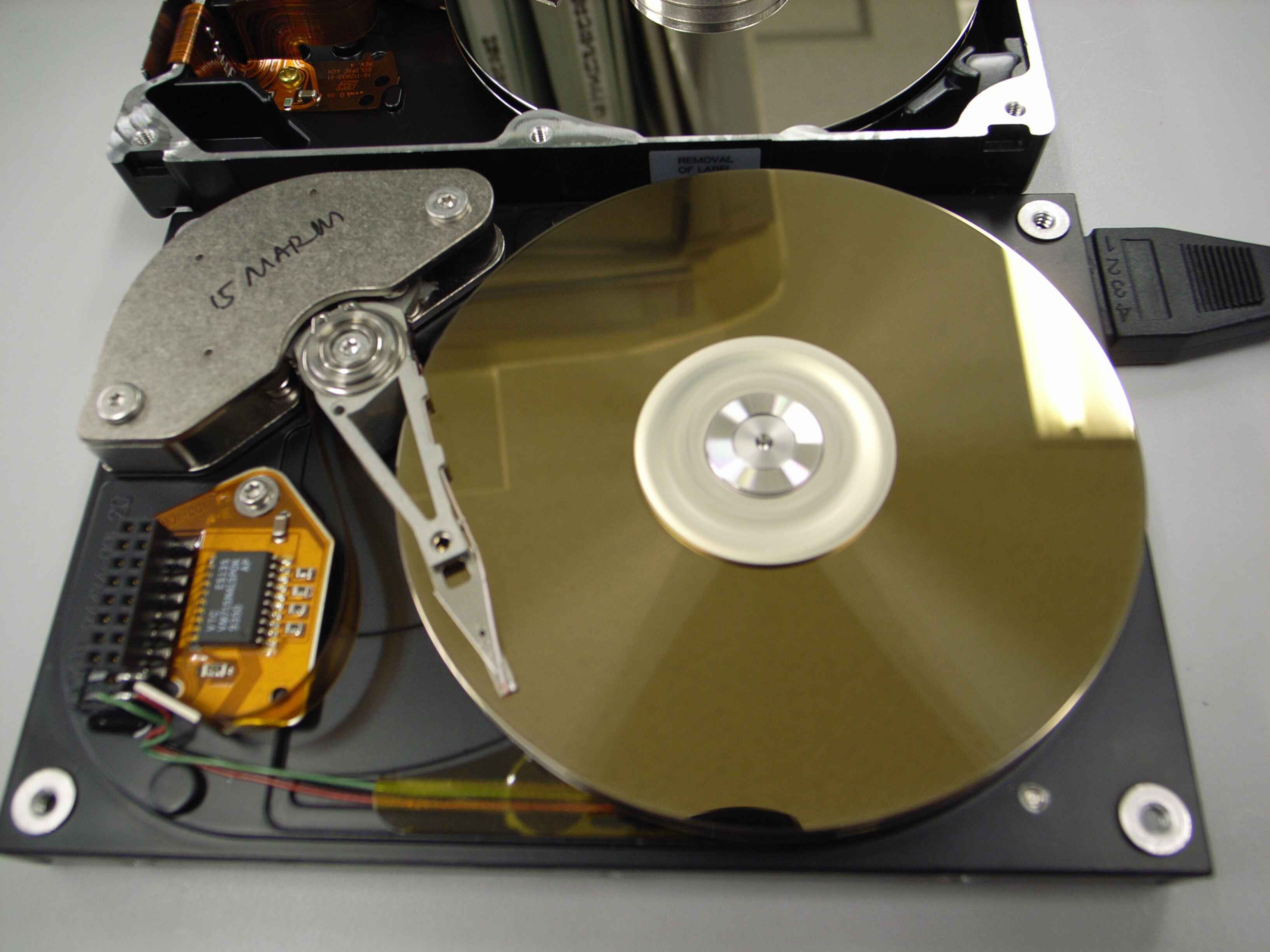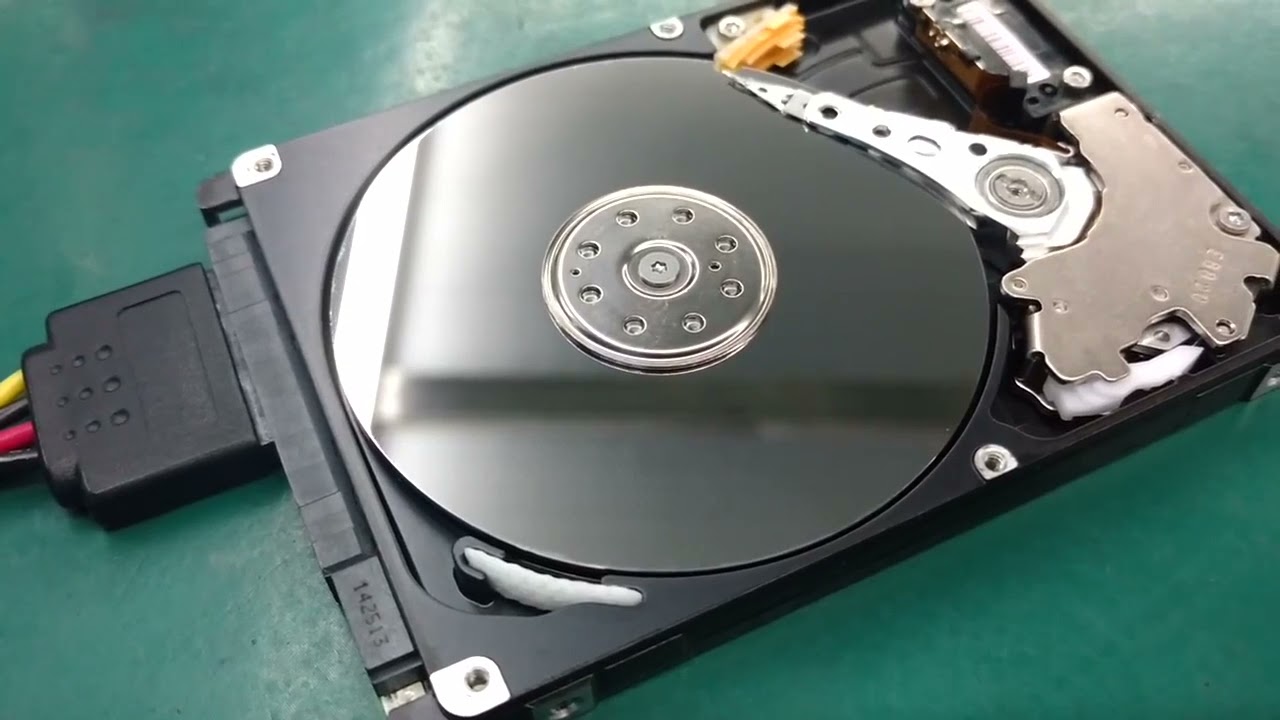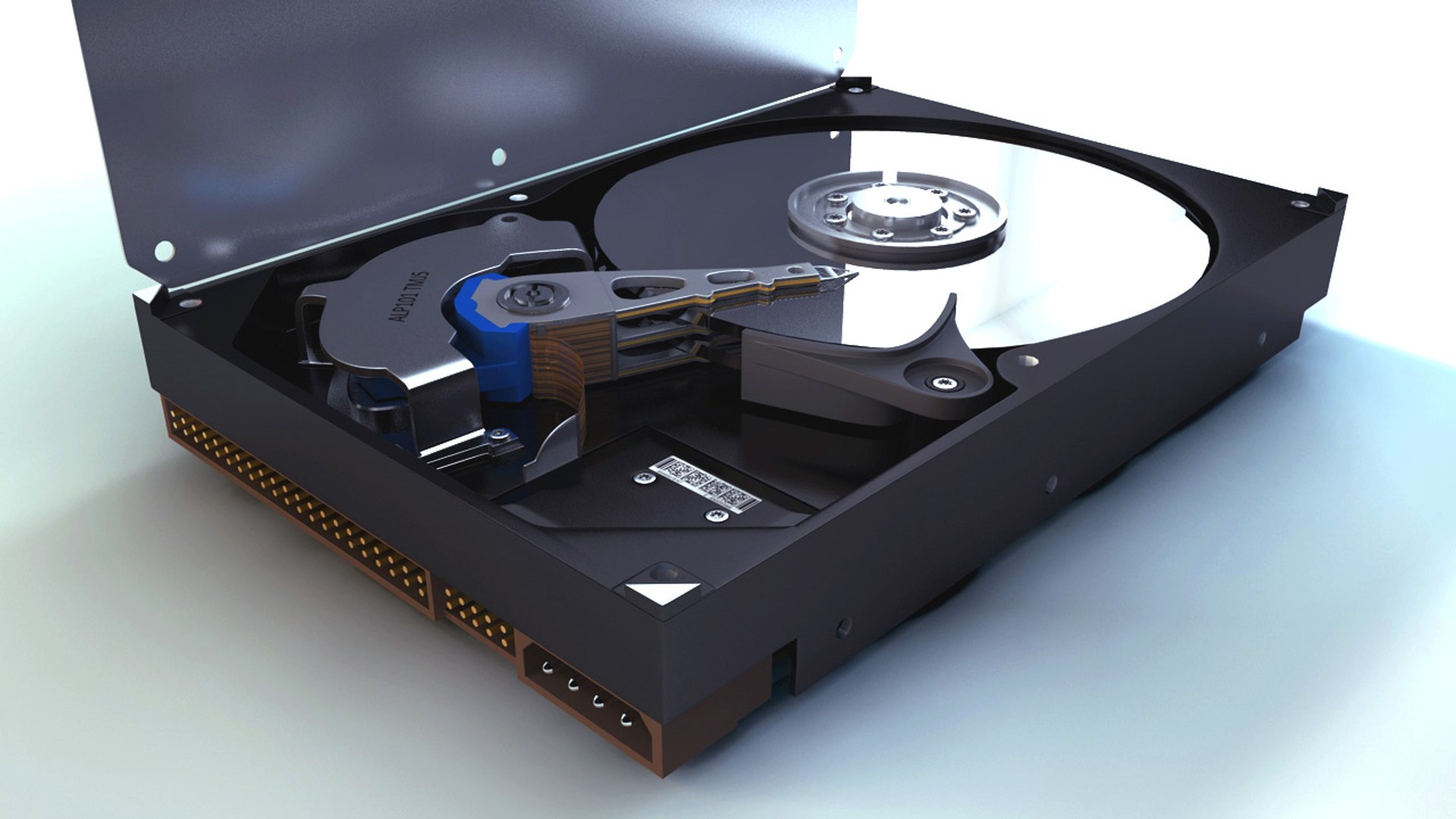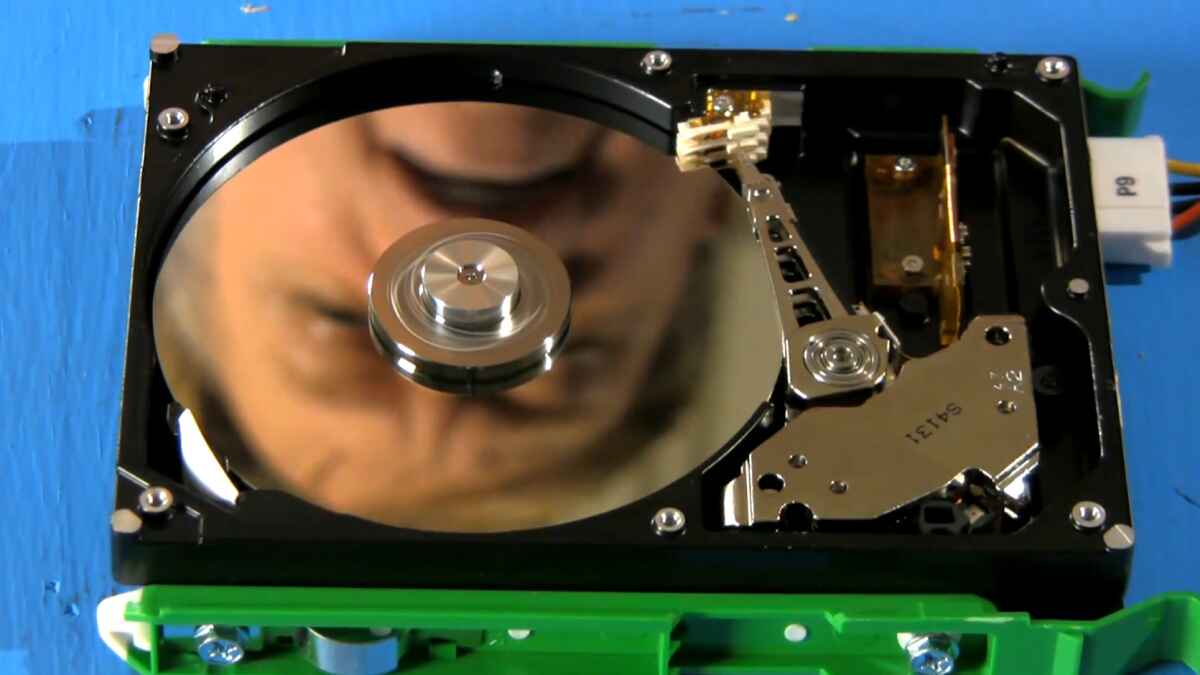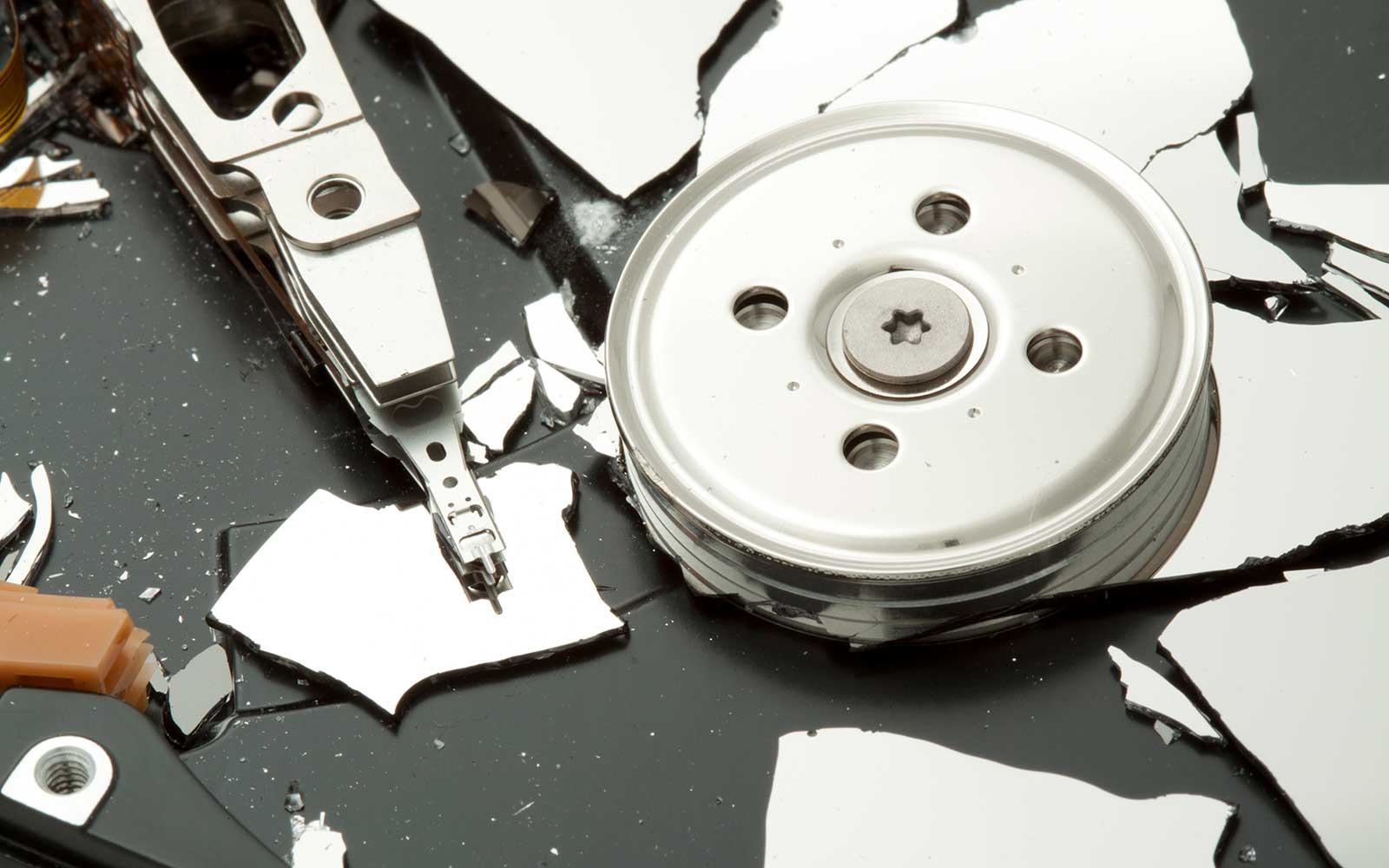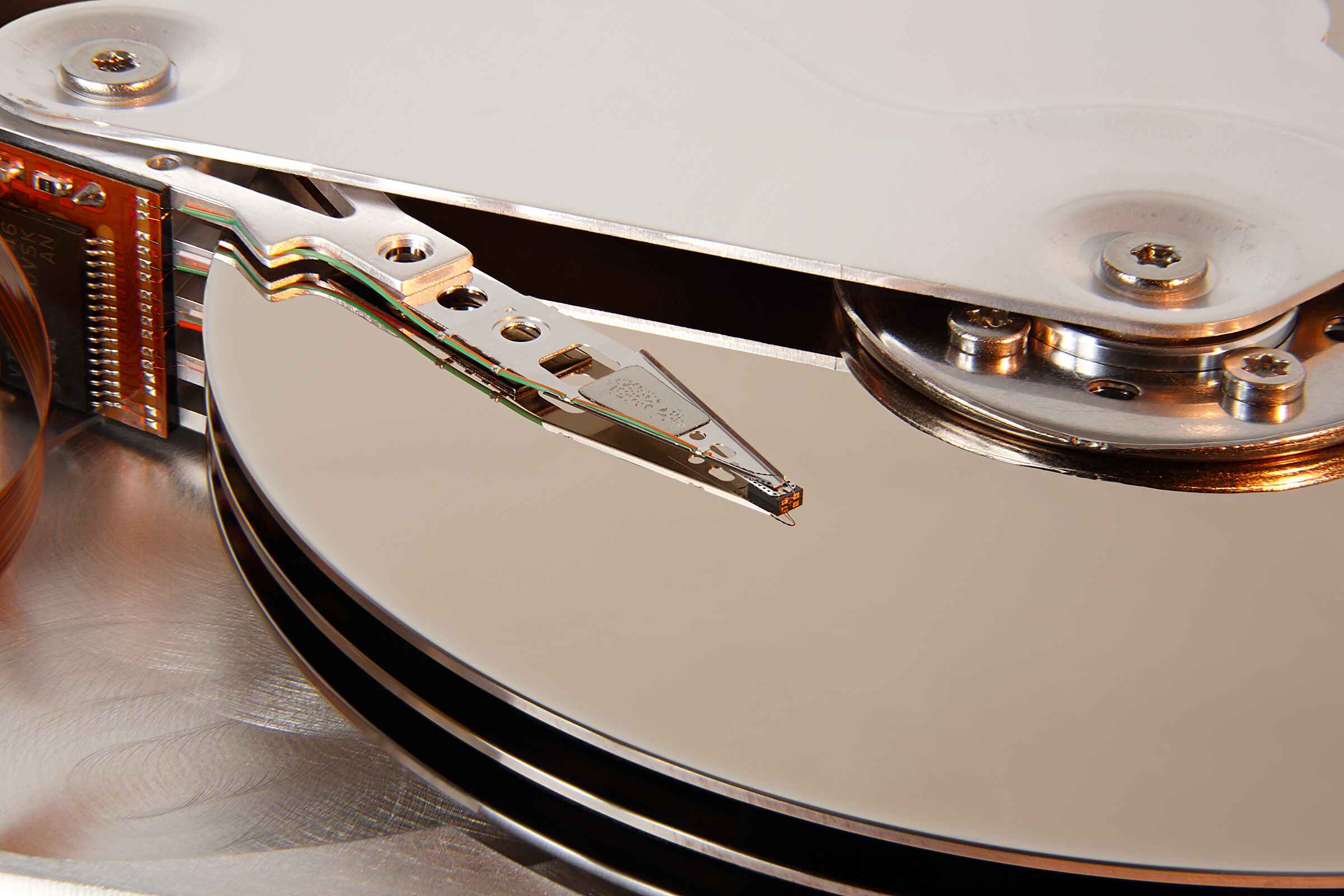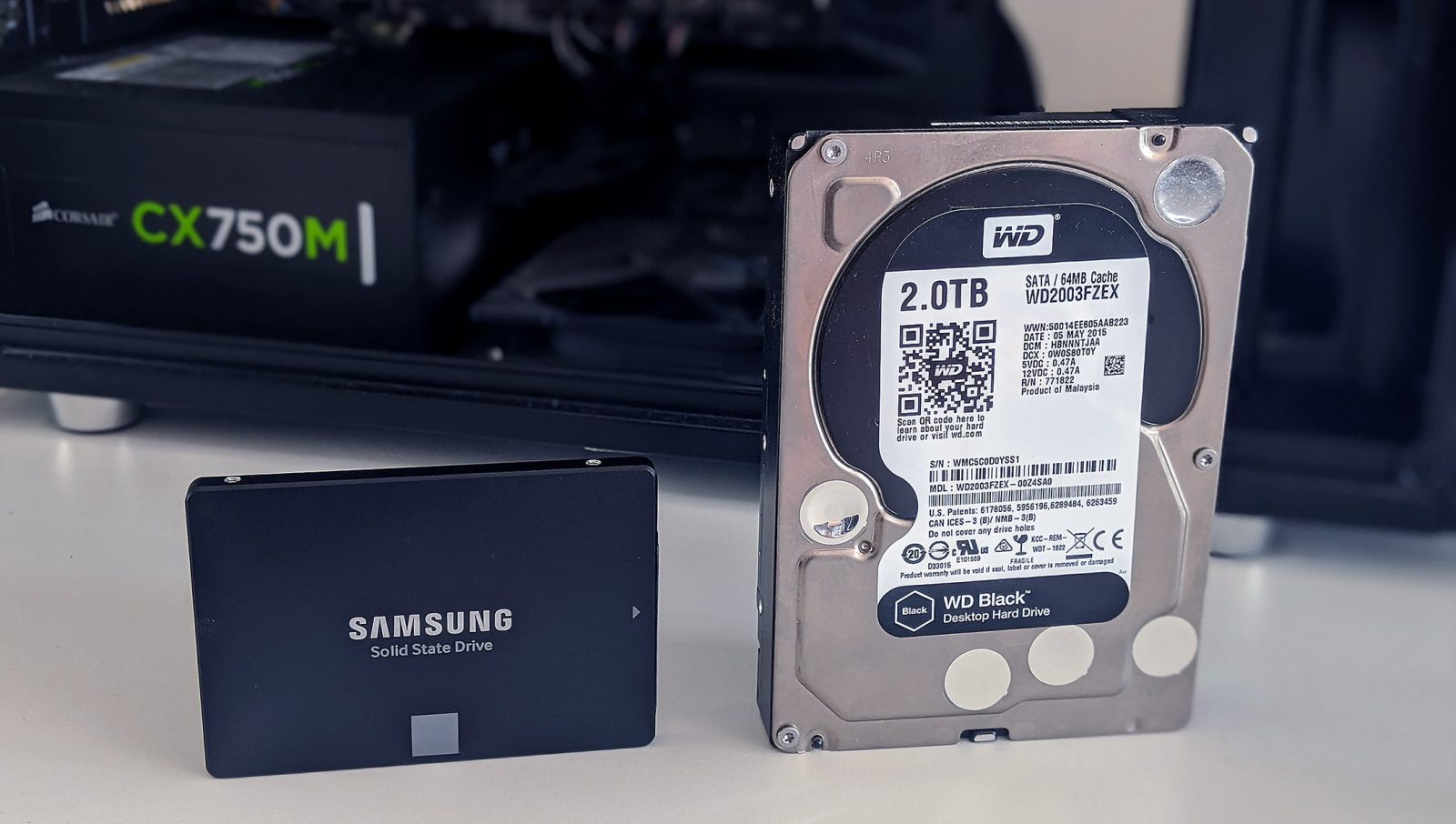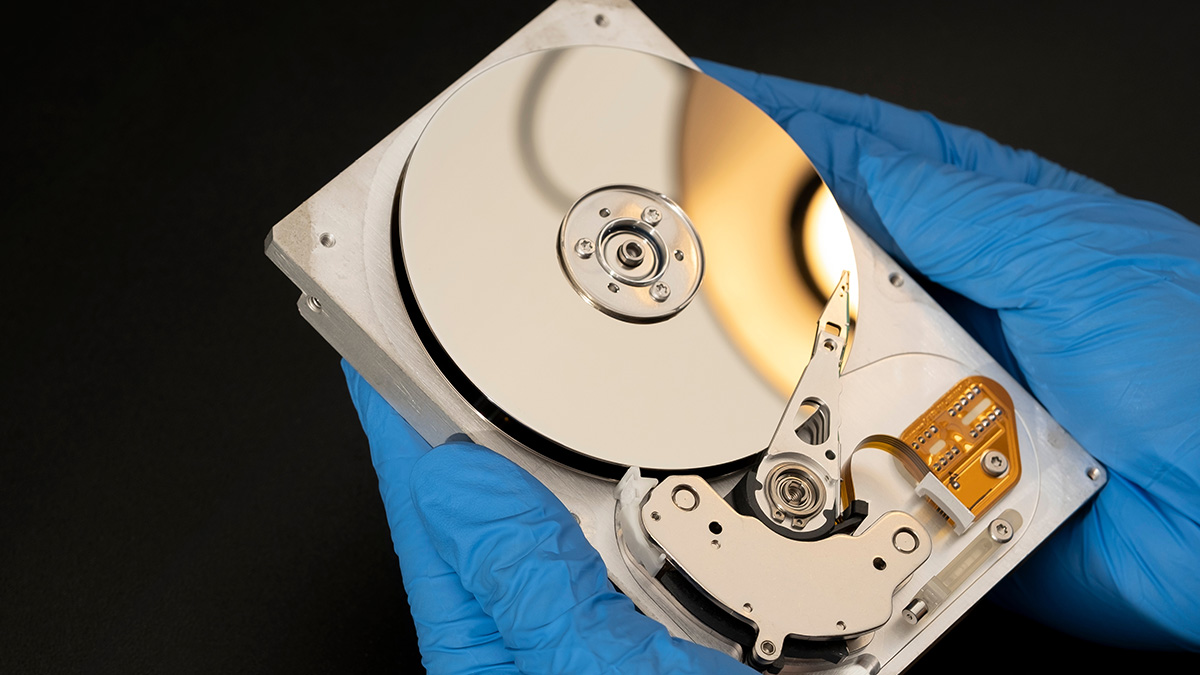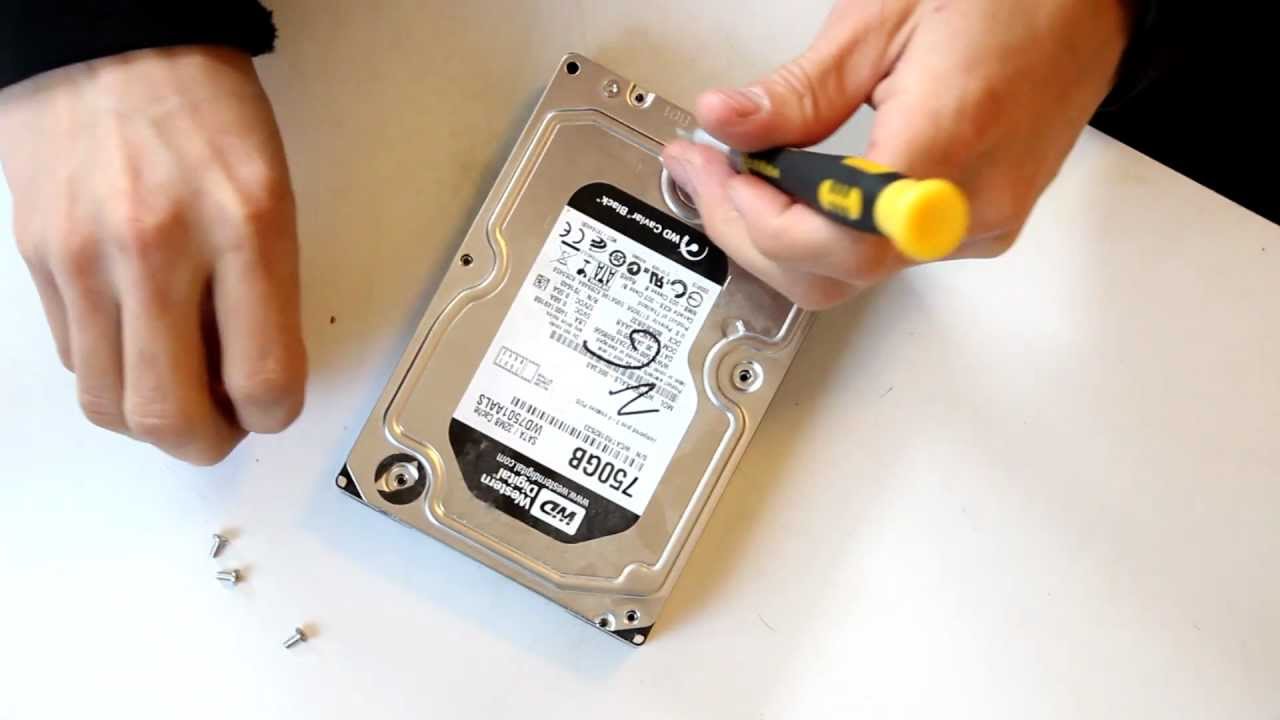Introduction
Welcome to the world of hard disk drives (HDDs), the workhorses of data storage in modern computing. Whether you’re saving important files, downloading movies, or playing the latest games, HDDs play a crucial role in securely storing and retrieving your data. While you may be familiar with the basic concept of a hard disk drive, have you ever wondered what makes up this incredible storage device?
In this article, we’ll take a closer look at one of the fundamental components of a hard disk drive: the platters. Platters are the circular disks that spin inside the HDD and store your valuable data. While they may appear simple at first glance, the platters are carefully engineered to provide the necessary surface for data storage and retrieval. We’ll explore the materials used to make these platters, their manufacturing process, and their role in the overall performance of the hard disk drive.
So, grab your virtual lab coat, and let’s dive into the fascinating world of hard disk drive platters.
The Basic Components of a Hard Disk Drive
Before we dive into the details of hard disk drive platters, let’s first understand the basic components that make up a hard disk drive.
A hard disk drive consists of several essential components, each playing a crucial role in the storage and retrieval of data. The primary components include:
- Platters: These are the circular disks made of various materials that hold the magnetic data.
- Read/Write Heads: These are the tiny electromagnetic devices that read data from and write data to the platters.
- Actuator Arm: This mechanical arm holds the read/write heads and positions them accurately on the platters.
- Spindle Motor: This motor spins the platters at a high speed, typically ranging from 5,400 to 15,000 revolutions per minute (RPM).
- Controller Board: This circuit board controls the overall operation of the hard disk drive, including data transfer and motor speed control.
These components work in harmony to store and retrieve data from the hard disk drive. The platters, in particular, play a crucial role in this process.
Now that we have a basic understanding of the components, let’s dig deeper into the platters and understand what they are made of and how they function.
What Are the Platters Made Of?
Hard disk drive platters are typically made of a rigid material that can support the data storage process and withstand the mechanical stress caused by the spinning motion. The material used for platters needs to have specific properties to ensure reliable and efficient data storage.
The most common material used for platters is a form of glass or aluminum alloy. The platters are coated with a thin layer of magnetic material, usually a type of iron oxide, that allows data to be stored magnetically.
The use of glass or aluminum alloy ensures that the platters are strong, lightweight, and resistant to temperature fluctuations and corrosion. Glass platters, in particular, offer superior stability and accuracy due to their flatness and uniformity. These qualities help minimize errors during data reading and writing processes.
With the advancement of technology, manufacturers have also started exploring the use of alternative materials such as specialized ceramics or carbon-based composites for platter construction. These materials offer even greater durability, higher areal density (the amount of data that can be stored per unit area), and improved overall performance.
It’s important to note that while the materials used for platters are robust, they are still susceptible to physical damage. Even a minor scratch or dust particle on the platter’s surface can lead to data loss. Therefore, it is crucial to handle hard disk drives with care and avoid exposing them to extreme conditions or contaminants.
Now that we’ve covered the materials used in hard disk drive platters, let’s explore their role in the data storage process and how they are manufactured.
The Role of Platters in Data Storage
The platters in a hard disk drive play a vital role in the data storage process. These circular disks are coated with a magnetic material that allows data to be stored and retrieved using the read/write heads. The magnetic coating on the platters is divided into smaller regions called magnetic domains, which can be magnetized to represent binary data (0s and 1s).
When a hard disk drive is in operation, the spindle motor rotates the platters at high speeds. The read/write heads, mounted on the actuator arm, hover just above the platter surface. The distance between the heads and the platter is so small that it is often referred to as the “fly height.”
When data needs to be written to the hard disk, the write head generates a magnetic field. By selectively magnetizing the magnetic domains on the platter’s surface, it encodes the data onto the disk. On the other hand, when data needs to be read, the read head senses the magnetic changes on the platter and converts them into electrical signals, which can then be processed and interpreted by the computer.
The platters’ large surface area allows for the storage of vast amounts of data. Hard disk drives can have multiple platters stacked on a spindle, with each platter having two surfaces for data storage. As technology advances, the areal density of platters continues to increase, allowing for greater storage capacities on smaller physical disks.
It is worth noting that the accuracy and stability of platters directly affect the reliability and performance of the hard disk drive. Any imperfections, such as uneven surfaces or variations in the magnetic coating, can lead to data corruption or loss. Manufacturers employ stringent manufacturing processes and quality control measures to ensure that the platters meet the highest standards of precision and durability.
Now that we understand the role of platters in data storage, let’s explore the common materials used in their manufacturing and the process involved in creating these vital components.
Common Materials Used for Platters
When it comes to hard disk drive platters, manufacturers primarily use two common materials: glass and aluminum alloy. Let’s delve into the specifics of each material and understand why they are favored choices for platter construction.
Glass: Glass platters offer numerous advantages in terms of stability and precision. They are typically made from a special type of glass called aluminum magnesium silicate. This glass is known for its low coefficients of thermal expansion, ensuring minimal dimensional changes with temperature variations. Glass platters also possess excellent flatness and uniformity, which helps optimize the performance of read/write heads during data access.
Aluminum Alloy: Aluminum alloy platters are another commonly used material due to their lightweight and cost-effectiveness. These platters are made by combining aluminum with other alloying elements such as magnesium or zinc. Aluminum alloy platters offer good mechanical strength, corrosion resistance, and conductivity. They are particularly suitable for portable devices where weight reduction is critical.
Additionally, with the continuous advancement in hard disk drive technology, manufacturers are exploring the use of alternative materials to further enhance performance. These include specialized ceramics and carbon-based composites. Ceramic platters offer superior hardness, thermal stability, and resistance to wear. They also exhibit excellent magnetic properties and can withstand high rotation speeds. Carbon-based composites, on the other hand, offer excellent rigidity, reduced vibration, and improved signal-to-noise ratio.
While the specific material used for platters may vary depending on the desired characteristics and application, the fundamental aim remains the same: to provide a stable and robust platform for data storage. Regardless of the material, all platters undergo stringent manufacturing processes to ensure high quality, precision, and reliability.
Now that we understand the common materials used for platters, let’s delve into the intricate process involved in manufacturing these essential components of a hard disk drive.
How Platters Are Manufactured
The manufacturing process of hard disk drive platters is a precise and intricate procedure that involves several steps to ensure the highest quality and performance. While the exact methods may vary among manufacturers, the overall process generally follows a similar pattern. Here is a general overview of how platters are manufactured:
- Substrate Preparation: The first step involves preparing the substrate, which can be either glass or aluminum alloy. For glass substrates, a flat and smooth glass disk is used, while for aluminum alloy substrates, a metal disk is prepared and treated to remove any impurities.
- Cleaning: The substrates are thoroughly cleaned using precision cleaning methods to remove any particles, contaminants, or residues that may affect the platter’s performance or data integrity.
- Magnetic Coating: A thin magnetic layer is applied to the substrate’s surface. This layer is typically made of iron oxide or other magnetic materials. The deposition methods can include sputtering or chemical vapor deposition techniques.
- Polishing: The coated platters undergo a polishing process to achieve the desired level of smoothness and flatness. This is crucial to ensure proper read/write head contact and prevent data errors during data access.
- Lubrication: A lubricant is applied to the platter surface to reduce friction and wear between the read/write heads and the platters during operation. This helps prolong the lifespan of the hard disk drive and maintain its performance.
- Surface Inspection: The finished platters undergo thorough inspections to check for any surface imperfections, such as scratches or blemishes, that could affect data integrity. Advanced imaging systems and quality control measures are employed to ensure high standards are met.
- Assembly: Once the platters pass quality inspections, they are assembled into the hard disk drive along with other components, such as the actuator arm, read/write heads, spindle motor, and controller board.
The entire manufacturing process is carefully monitored and controlled to ensure consistency, precision, and reliability of the platters. Even the tiniest deviation or defect can have a significant impact on the overall performance and data integrity of the hard disk drive.
Now that we have explored how platters are manufactured, let’s examine some factors that can affect platter performance in a hard disk drive.
Factors Affecting Platter Performance
The performance of hard disk drive platters can be influenced by several factors that affect the overall reliability and data access speed. Understanding these factors is crucial in assessing the performance and longevity of a hard disk drive. Let’s explore some of the key factors that can impact platter performance:
- Surface Quality: The surface quality of the platters is critical for proper read/write head contact and accurate data storage and retrieval. Any imperfections, such as scratches, dust particles, or uneven coating, can lead to data errors or loss. Manufacturers employ rigorous quality control measures to ensure high surface quality standards.
- Rotational Speed: The speed at which the platters rotate, measured in revolutions per minute (RPM), directly affects the data access speed. Higher RPM allows for faster data retrieval, but it also increases power consumption and generates more heat. The rotational speed is carefully balanced to provide optimal performance while maintaining reliability and minimizing noise and heat output.
- Data Density: Data density refers to the amount of data that can be stored per unit area on the platters. Higher data density allows for greater storage capacity but can also impact read/write speed and reliability. Achieving higher data density requires advancements in platter technology, including improved magnetic coatings and more precise manufacturing techniques.
- Environmental Factors: The performance of platters can be influenced by environmental factors such as temperature and humidity. Extreme temperature fluctuations or high humidity levels can affect the stability of the platters and lead to data integrity issues. Hard disk drives are designed to operate within specific temperature and humidity ranges to ensure optimal performance and longevity.
- Shock and Vibration: Platters are susceptible to damage from shock and vibration. Sudden movements or excessive vibrations can cause read/write head crashes, leading to data loss or irreparable damage to the platters. Manufacturers implement various mechanisms, such as shock sensors and advanced mounting systems, to mitigate the impact of shock and vibration on platter performance.
- Wear and Tear: Over time, the constant spinning motion and read/write head contact can cause wear and tear on the platters. This can lead to degradation of the magnetic coating or physical damage to the platter surface. Regular maintenance, proper handling, and adherence to recommended usage guidelines can help extend the lifespan of the platters.
Understanding these factors and their impact on platter performance can assist users in making informed decisions when selecting and using hard disk drives. It’s crucial to strike a balance between performance, reliability, and longevity to ensure optimal data storage and retrieval.
Now that we have examined the factors that affect platter performance, let’s wrap up our exploration of hard disk drive platters.
Conclusion
In conclusion, hard disk drive platters are key components in the data storage process, providing a stable and reliable platform for storing and retrieving valuable information. Whether made of glass, aluminum alloy, or alternative materials, platters are carefully engineered to meet the demanding requirements of modern computing.
We have learned that glass platters offer exceptional stability and precision, while aluminum alloy platters provide a lightweight and cost-effective solution. Manufacturers are continuously exploring new materials, such as ceramics and carbon-based composites, to push the boundaries of performance and storage capacity even further.
The manufacturing process of platters involves meticulous attention to detail, ensuring high surface quality, precise magnetic coatings, and optimal flatness. Quality inspections and rigorous control measures are implemented to guarantee the reliability and performance of the platters. Factors such as surface quality, rotational speed, data density, environmental conditions, shock and vibration, as well as wear and tear, can all impact platter performance.
By understanding these factors, users can make informed choices and take appropriate measures to maintain and optimize the performance and longevity of their hard disk drives. Proper handling, regular maintenance, and adhering to recommended usage guidelines can help mitigate risks and ensure reliable data storage and retrieval.
As technology continues to evolve, hard disk drive platters will likely undergo further advancements to increase storage capacity, enhance performance, and improve overall reliability. With these advancements, hard disk drives will continue to be an essential and cost-effective storage solution in various computing applications.
So, the next time you save a file or access your data on a hard disk drive, remember the critical role that platters play in safeguarding your valuable information.







